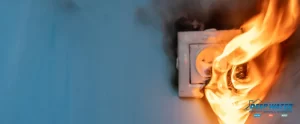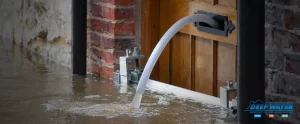Last2020, the National Fire Protection Association (NFPA) said an estimated 1.4 million fires hit America, resulting in 3,500 casualties, 15,200 injuries, and about $21.9 billion in property damage. Of these house fires, the report also said thatheating equipment, which accounts for one in seven blazes (or about 14%), is the leading cause of fire. Furthermore, fireplaces and chimneys caused 29% of the fires of the various home heating equipment used.
What these numbers show us is that fireplaces may be great to have at home but should be considered a fire hazard. Although many fireplace-related fires are classified as “confined fires” or were small and didn’t extend beyond the chimney, people must still exercise caution when using a fireplace.
If you have a fireplace at home, this article is for you as it will provide you with some great tips on how you can enjoy your fireplace minus thefire risks. But before we go to the nitty-gritty, let’s first look at the types of fireplaces.
Types of Fireplaces
There are three types of fireplaces. The first one is the classic wood-burning fireplace we are all familiar with. It typically comes with two parts: the firebox, where pieces of wood are placed and burned; and the flue or chimney, where the smoke escapes.
The second type of fireplace is thegas fireplace. As the name implies, it burns gas instead of logs and gives off radiant and convected heat rather than getting it directly from an open fire. It is a popular heating option as it is a space-saver (compared to wood-burning fireplaces that require massive masonry), is energy efficient, and does not emit smoke. However, it is important to point out that gas fireplaces can also be dangerous since they emit carbon monoxide, which can cause nausea, dizziness, headaches, and even death.
The third type is the electric fireplace. Since it runs on electricity, it’s more energy efficient and a lot safer than the other two types and requires the least maintenance. It is also the least expensive of the three. Lastly, electric fireplaces come in various models and sizes that can be used in most applications. For instance, tiny houses and even RVs usually use electric fireplaces. The only downside of using an electric fireplace is it lacks the ambiance and the overall feel of a wood-burning fireplace.
Fireplace Safety Tips
In a report covering2014-2018, the NFPA said approximately three out of ten home fires caused by heating equipment involved the use of fireplaces. Thus, operating a fireplace should be done with utmost care. The following easy-to-follow safety tips should be helpful:
1. Install a carbon monoxide detector.
A carbon monoxide detector will usually alarm when the chimney’s exhaust does not properly expel smoke. It can also sense the presence of other gases that may have since built up inside your home because of incomplete combustion. If there is a leak in the flue or chimney, the alarm will likewise sound off. For best results, the detector should be tested monthly to ensure it works.
2. Add safety screens or gates.
Even with the best woods, ember and fire in a fireplace can still escape. It can spell danger when this happens, but you can prevent it by getting a safety screen. Also known as a safety gate, this fire-safe barrier prevents embers from leaving the fireplace.
There are many options for fire screens, and you can pick one that matches your house’s interiors. However, you must ensure that the fireplace safety gate you’ll get is fire-resistant.
3. Use hardwood instead of softwood logs.
Wood with a high moisture level is known as softwood or unseasoned logs. They are affordable and provide enough heat, but they pose risks for many homes. When burning softwood logs, creosote or soot can quickly accumulate and cause severe damage.
When lighting a fire in a fireplace, the better option is hardwood, as this keeps creosote from building up in the area. These logs have been dried and treated with chemicals to reduce moisture content.
4. Have a fireplace cleaning log ready.
Sweeping logsare made of a special wood material specifically designed to clean your chimneys. Sometimes called “chimney sweeping” or “creosote cleaning” logs, these can be used as an emergency solution when you don’t have the time to do manual chimney cleaning using water, soap, and other tools.
Because it uses heat rather than chemicals, a sweeping log is great for clearing out those annoying cobwebs in your fireplace. It saves you time and energy since you no longer need to crawl through tight spaces. These cleaning logs can also save you money, as one sweeping log can be used multiple times.
5. Do regular fireplace cleaning.
A bristled brush or a small shovel is an excellent fireplace-cleaning tool. Either of these tools can make fireplace cleaning easy as they can remove ash or soot accumulated in the firebox and flue. A complete fireplace sweep should be done every five to seven years, depending on how often the fireplace is used.
6. Follow a pre-planned fire escape route.
Create an easy-to-follow escape plan in case of a fire in a fireplace suddenly erupts. Everyone in the family should be aware of this plan for a quick and orderly evacuation.
7. Act fast if fire from the fireplace occurs.
To put out fire in the fireplace, spread the wood and embers all around the area. Although this can consume precious minutes, expect the flames to die out eventually. Use a fireplace shovel to cover the embers with ash when this happens. Afterward, cover the fireplace with baking soda to extinguish any remaining embers. Scoop out the ashes the next day and place them in an aluminum ash container.
Key Takeaway
Despite the possibility that it can spark a home fire, the typical fireplace is not entirely dangerous. By following various safety tips, any fireplace can become completely safe for everyone. Installing a safety gate is a common solution. Another option is using hardwood logs to start your fireplace rather than softwood which produces creosote.
If your fireplace at home starts a fire, you will need the services of a reputable fire damage mitigation company. With their expertise, you can rebuild your damaged home and start anew.
Deep Water Emergency Services and Mitigation can rescue and rebuild your home from the ashes of fire damage.
Because fires often happen when you least expect them, they can quickly cause severe damage to your property and everything inside. When needing fire damage mitigation services, your best choice is Deep Water Emergency Services and Mitigation. Our team of experts can provide top-notchfire damage mitigation in Colorado Springsand surrounding areas. Call us now and see us deliver.






